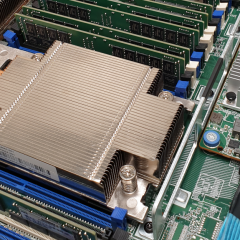Cisco Catalyst Switches – Adding Licenses
KB ID 0001012 Problem I had a load of Cisco Catalyst 3560 switches that needed ‘ipbase’ licenses adding to them today. I’ve messed about with plenty of ASA license upgrades before, but not switches. Solution 1. First thing you need is a Cisco PAK, this may be in an email or turn up in a cardboard envelope. 2. Go to http://www.cisco.com/go/license and log in (if you don’t already have a Cisco CCO account you...
Windows – Getting Drivers for ‘Unknown Device’ or ‘Base System Device’
KB ID 0000699 Problem There’s nothing more annoying, you have just rebuilt your PC and you are missing some drivers. Everything appears to be working but there’s one (or more) devices in Device Manager with a yellow exclamation mark over them called ‘Unknown Device’ or ‘Base System Device”. Solution This solution is not a ‘Fix All’ for all situations, but it will point you in the right...
PowerShell – List All Domain Users and Their Last Logon Time
KB ID 0000752 Problem In the past I’ve looked at third party tools to do this but what if you wanted to use PowerShell? Solution Heres’ a cool solution that might interest you also Updating Domain Computer Objects with User and Machine Information 1. On your server paste the following script into Notepad; $NumDays = 0 $LogDir = “.Users-Last-Logon.csv” $currentDate = [System.DateTime]::Now $currentDateUtc...
Exchange 2003 – NDR ‘This message is too large to send.’
KB ID 0000620 Problem An NDR is received by someone trying to send you an email that is too big, this is an example of what they get sent back to them. Delivery has failed to these recipients or groups: Recipients Email Address This message is too large to send. To be able to send it, make the message smaller, for example, by removing attachments. Diagnostic information for administrators: Generating server: receiving server name...
Windows – ‘The directory service has exhausted the pool of relative identifiers’
KB ID 0000797 Problem I got this error when attempting to bulk create users with CSVDE (see below). But you may simply see it when trying to create a user, or other AD object. Unwilling To Perform The server side error is “The directory service has exhausted the pool of relative identifiers.” Solution Well that is a scary looking error! Firstly make sure you can see all your FSMO role servers. Locate your FSMO Role...





